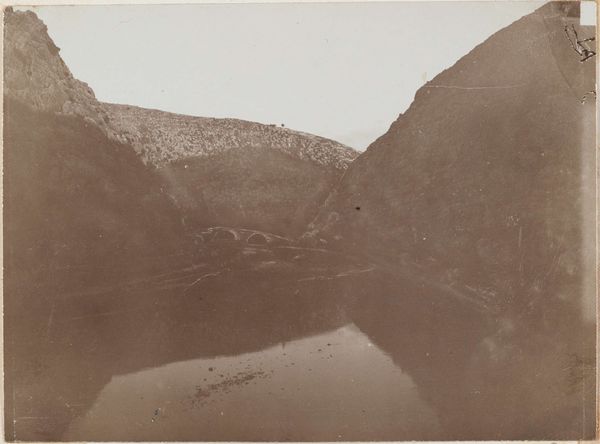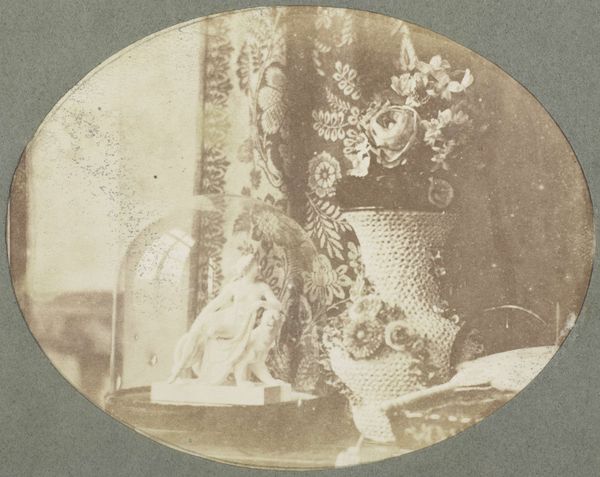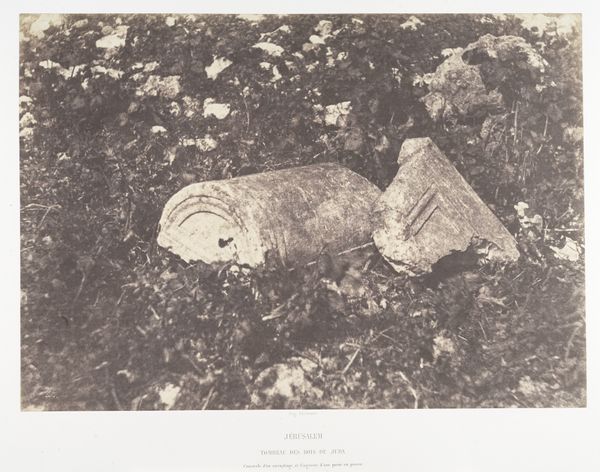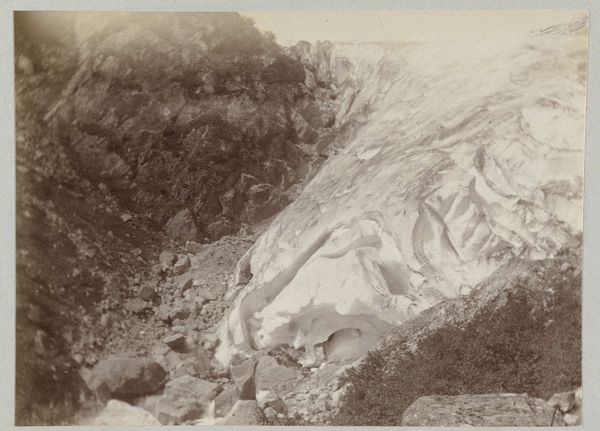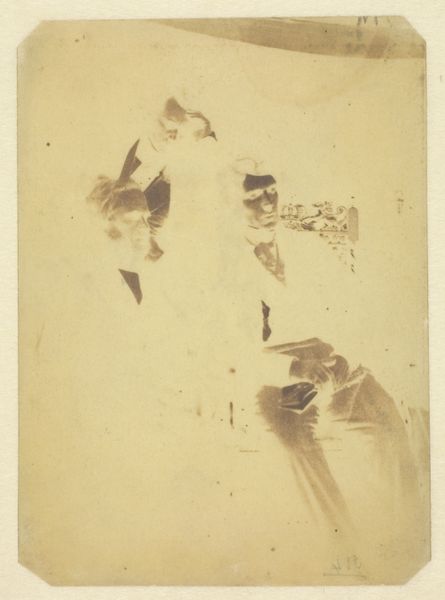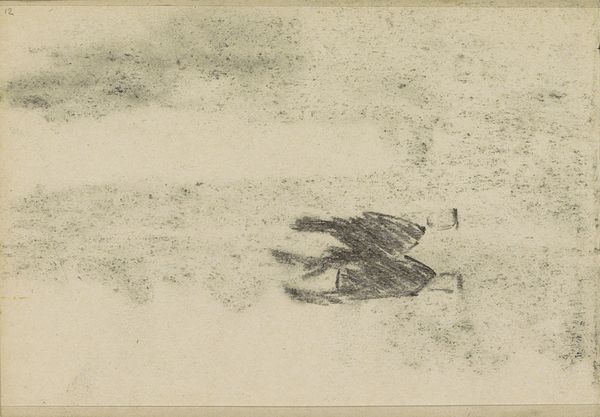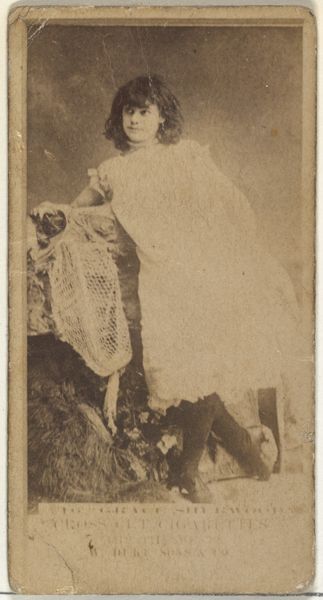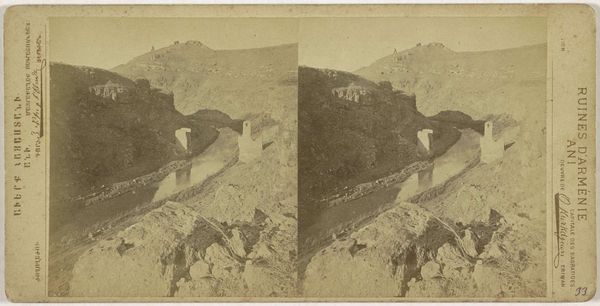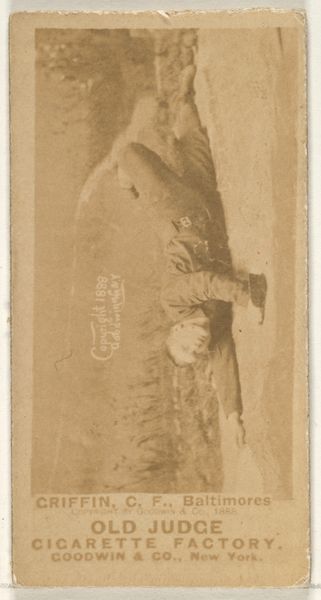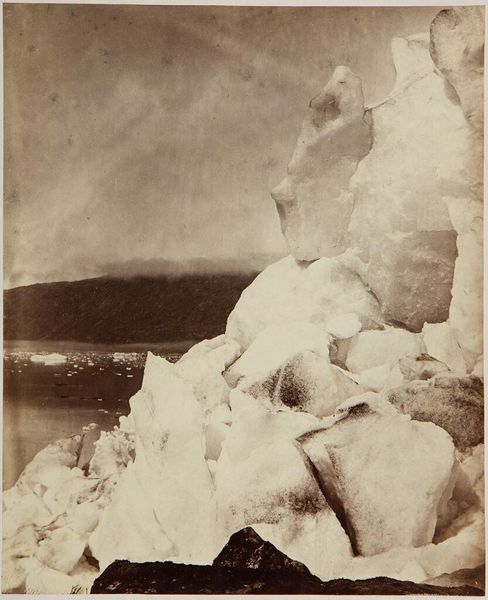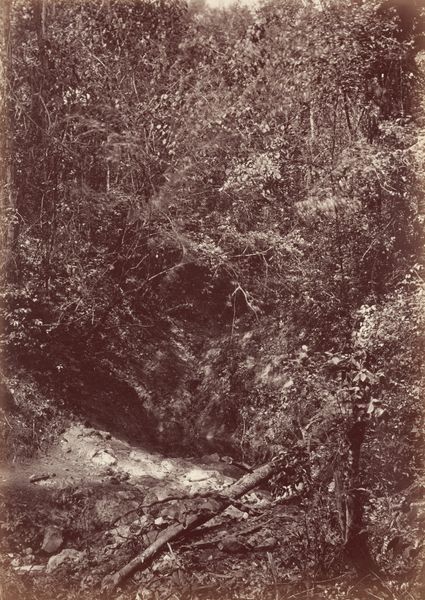![[Dead Roe Buck] by Horatio Ross](/_next/image?url=https%3A%2F%2Fd2w8kbdekdi1gv.cloudfront.net%2FeyJidWNrZXQiOiAiYXJ0ZXJhLWltYWdlcy1idWNrZXQiLCAia2V5IjogImFydHdvcmtzL2MwMWUyNWQzLTk0NjEtNGY4MS1hN2FlLWY1ZGJiMWQxNDcxMy9jMDFlMjVkMy05NDYxLTRmODEtYTdhZS1mNWRiYjFkMTQ3MTNfZnVsbC5qcGciLCAiZWRpdHMiOiB7InJlc2l6ZSI6IHsid2lkdGgiOiAxOTIwLCAiaGVpZ2h0IjogMTkyMCwgImZpdCI6ICJpbnNpZGUifX19&w=3840&q=75)
Dimensions: 14.6 x 18.5 cm (5 3/4 x 7 5/16 in.)
Copyright: Public Domain
Curator: Here we have Horatio Ross's gelatin-silver print, “[Dead Roe Buck],” created sometime between 1856 and 1859. Editor: It’s a stark image. The lone deer dominates the composition, its stillness amplified by the surrounding open field. There’s a distinct somber mood about it, almost…mournful. Curator: Indeed. Ross was a Scottish sportsman and photographer, active during a period when the romantic depiction of nature was fashionable. What do you see in terms of symbolic resonance? Editor: Well, deer, throughout various cultures, are often associated with gentleness, vulnerability, and a connection to the spiritual realm. The deer's death then feels loaded with meaning—perhaps the fragility of life, or even humanity's impact on nature. Curator: And, from an art-historical viewpoint, consider that landscape photography was evolving rapidly at the time. It wasn't simply about documenting pretty scenes, but often about asserting human dominance over the landscape, reflecting the social and political values embedded in the era's embrace of Realism. The image normalizes the killing of an animal for sport as just a moment of beauty captured forever in history. Editor: But what about the positioning of the deer? The way it’s presented almost centrally… it evokes a sense of ceremony, as if staging a reverence. A very strange romanticized vision of the result of the hunting. Curator: Or could that formal staging speak to the societal importance of hunting during the Victorian era? Hunting estates were status symbols, and photographic trophies, such as this one, were part of projecting social standing. Consider how photographs like this one also entered exhibitions, further reinforcing these values in the broader culture. Editor: Right, so its function extends beyond a mere recording; it participates in constructing a narrative about land ownership, wealth, and even power, right? Curator: Precisely! While we can read symbolism related to nature and mortality into this gelatin print, understanding its role in the visual culture of 19th century Britain offers us a crucial and very poignant perspective. Editor: This makes you think about how different levels of culture may understand this photograph depending on what aspects they relate the most to, whether aesthetics, religion or sport practices. Food for thought.
Comments
No comments
Be the first to comment and join the conversation on the ultimate creative platform.
